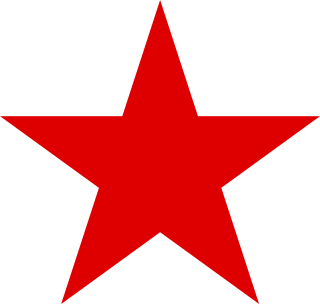Second Formation
The Group was re-created for a second time with its staff in Budapest seemingly during September 1955 (though former Soviet sources disagree; Feskov et al. say it was created on November 24, 1956). Lenskii says that it was re-created in 1955 to control the Soviet troops in Hungary following the disbandment of the former Central Group of Forces which had controlled troops in Austria and Hungary from 1945 to 1955, and the Soviet withdrawal from Austria. Under its command were the 2nd Guards 'Nikolayevsk-Budapest' Mechanised Division, the 17th Guards 'Yenakievskiy-Danube' Mechanised Division, two air divisions, and other troops. Lenskii says their function was 'to cover the boundary with neutral Austria and to guarantee communications in the case of the advancement of troops from the USSR'.
Hungarian Revolution
On October 24, 1956 the 33rd Guards Kherson Mechanized Division, previously stationed in Romania near the Romanian-Hungarian border, and two divisions from the Carpathian Military District, the 11th Guards 'Rovenskaya' Mechanized and 128th Guards Rifle Division, entered Hungary under the control of a Rifle Corps. The forces already in Hungary and those entering totalled 31,500 men. The 33rd Guards Mechanised Division took the lead role in suppressing the Hungarian Revolution in Budapest, and lost, according to Soviet sources, 14 tanks and assault guns as well as 9 armoured personnel carriers. Seven months afterward, on May 28, 1957, an agreement on the status of Soviet troops, comprising the Southern Group of Forces, was made between the USSR and Hungary.
The 11th Guards Mechanised and 128th Guards Rifle Divisions returned to the Carpathian Military District and were replaced by the 21st Guards 'Poltava' Tank Division and the 27th 'Cherkassy' Motor Rifle Division, both under the command of the Carpathian Military District's 38th Army. 2nd Guards Mechanised Division was re-formed into the 19th Guards Tank Division, and the 17th Guards Mechanised Division was re-formed into the 17th Guard Motor Rifle Division and withdrawn to the USSR. The 33rd Guards Mechanised Division was then replaced by the 35th Guards 'Kharkov' Mechanised Division.
1957–1990
Later, either in 1957 or 1965, three of the four divisions in the Group were redesignated, and toward the end of the 1980s the Group comprised:
- Southern Group of Forces, in Budapest
- 13th Guards Tank Division, in Veszprém
- 19th Guards Tank Division, in Esztergom
- 93rd Guards Motor Rifle Division, in Kecskemét
- 254th Motor Rifle Division, in Székesfehérvár
- 22nd Missile Brigade, in Dombóvár
- 55th Anti-Aircraft Missile Brigade, in Mór
- 70th Radio Engineering Brigade, in Budapest
- 127th Guards Brigade, in Budapest
- 297th Anti-Aircraft Missile Brigade, in Dunaföldvár
- 459th Missile Brigade, in Tata
- 36th Air Army, in Budapest
- 11th Guards Fighter Aviation Division, in Tököl
Smaller units included the 327th Anti-Aircraft Missile Regiment (327 ZRP), headquartered at Szolnok and tasked with airfield defence. [4] In 1967, the 22nd Missile Brigade became part of the Southern Group of Forces at Dombóvár. [5]

The removal of Soviet troops from Hungary began during May 1989, with the withdrawal and disbandment of 13th Guards Tank Division. Later the 19th Guards Tank Division was withdrawn to the Belarusian Military District and the 254th Motor Rifle Division to the Kiev Military District. The 93rd Guards Motor Rifle Division was withdrawn in early 1991 to the Kiev Military District and the Group finally disbanded on 16 June 1991.
Commanders
- December 1956 – October 1960 - Army General Mikhail Kazakov
- October 1960 – August 1961 - Colonel General Matvei Nikitin
- August 1961 – September 1962 - Army General Pavel Batov
- September 1962 – October 1969 - Colonel General Konstantin Provalov
- October 1969 – December 1975 - Colonel General Boris Ivanov
- December 1975 – March 1979 - Colonel General Fedot Krivda
- March 1979 – August 1982 - Colonel General Vladimir Sivenok
- August 1982 – August 1985 - Colonel General Konstantin Kochetov
- August 1985 – June 1988 - Colonel General Alexey Demidov
- June 1988 – December 1990 - Colonel General Matvey Burlakov
- December 1990 – September 1992 - Lieutenant General Viktor Shilov














